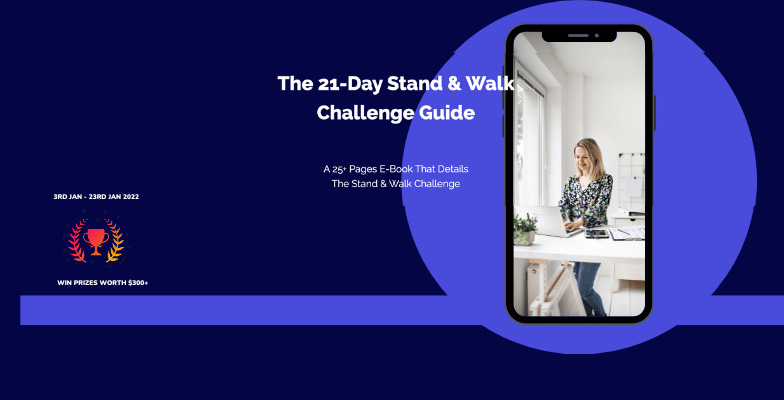HIIT Or Steady State Cardio?

Introduction
I love HIIT. It saves me time. It provides me with the required vigor and stimulation that I need to kick off my day. Those 20-30 minutes of hard HIIT are what I look forward to.
I love challenges, and it’s a nice break from my otherwise sedentary lifestyle (which I am trying to alter via a standing desk and my Fitbit 10,000 steps challenge).
But don’t worry; I won’t shove HIIT down your throat if you don’t want it. I am personally interested in optimizing my gene expression and want to move towards wellness in the shortest time that I have available. I know one can be optimally healthy, fit and functional in only 3-6 hours a week.
Having said that, I try to remain unbiased towards all concepts that are there in the vast field of health, fitness and nutrition.
The bottom line always remains, any exercise is better than no exercise.
With that thought in mind, let’s delve deep into the world of aerobic conditioning.
The World Of Aerobic Conditioning
Consistent Endurance Exercise
Such as, 30-60 minutes of continuous running or cycling 3-7 days a week causes a long list of cardiovascular adaptations and responses.
Namely increased cardiac muscle mass, increased stroke volume, increased carbohydrate sparing (thus greater use of fat as fuel), increased metabolic waste, increased oxidative enzyme, the faster diffusion rate of oxygen and fuel into muscle, increased mitochondria (energy factory of cell) function, improved cell regulatory mechanisms of metabolism and increased fat oxidation.
Now, that’s a long list of cardiovascular, skeletal-muscle and metabolic adaptations. But recent studies have shown that performing HIIT has similar and, in some cases, superior adaptations when compared with steady-state cardio.
Consider These Studies
Trapp et al. conducted a HIIT program with young women for 15 weeks with three 20 min sessions per week. HIIT consisted of an 8s sprint followed by 12s of low-intensity cycling, repeated for 20 min. Another group of women carried out an aerobic cycling protocol for 40 min each session. 1https://www.hindawi.com/journals/jobe/2012/480467/
Results showed that women in the HIIT group lost 2.5 kg of subcutaneous fat, whereas no change occurred in the steady-state aerobic group. Fat loss accruing through 15 weeks of HIIT was attained with 50% less exercise time commitment and similar energy expenditure to that of steady-state exercise.
A 12-week controlled study in Denmark of high-intensity interval walking for patients with Type 2 diabetes showed it helped control blood glucose levels better than continuous moderate exercise, even though the same number of calories was expended by both groups. 2https://diabetesjournals.org/care/article/36/2/228/38194/The-Effects-of-Free-Living-Interval-Walking
Interval training also was more effective at enhancing the patients’ physical fitness and reducing body fat relative to lean muscle tissue.
Does That Mean You Should Switch Over To HIIT?
HIIT protocols are extremely challenging, and one has to be highly motivated to tolerate the accompanying discomfort. Furthermore, HIIT may not be appropriate for everyone.
In a recent report in the American College of Sports Medicine’s Health & Fitness Journal, Dr. Little; his wife, Mary E. Jung, also at the University of British Columbia; and Marcus W. Kilpatrick of the University of South Florida wrote that,
HIIT is only appropriate for low-risk individuals, moderate-risk individuals who have been cleared for vigorous intensities by a medical professional, and high-risk individuals who are under direct medical supervision during exercise training.
Final Verdict
HIIT Or Steady State Cardio?
Any movement is better than none. Yes, there is an overwhelming number of recent studies that have proved that HIIT protocols need not be limited to athletes anymore. It can yield a broad range of physiological gains, often in less time than steady-state cardio.
I am not against steady-state cardio, but I want to advise people who only completely rely on it that excessive long-duration cardio can cause muscular imbalances and loss of muscle mass.
Further, HIIT, or steady-state cardio, is only a part of the whole story. Other activities should be inculcated in your training regime to build a healthy and functional body.
FBX is a multi-faceted training system that makes you fit and healthy in only 3-6 hours of exercise per week. Anything more, you are risking yourself being overtrained.
Related Course:
For me personally, performing high-intensity training like heavy weight lifting and HIIT regime can take a toll on my mental strength too. Sometimes, taking it easy on a cardio machine while watching a movie is a much-welcome break and can actually be rejuvenating! But only sometimes 🙂
What do you think about HIIT? Have any questions? Let me know in the comments below!

Skill-Based Education.
Global Recognition.
Powerful Community Building
Secure a certificate of completion in as little as a day by graduating from one of our free courses.
Get Access to Our Free Courses. No Credit Card Required.

Fabulous Body Membership
Your All-Access Pass to A Fabulous Body & A Rewarding Career
25+ Certificate Courses & Programs, All Included
15 Day Free Trial, 100% Money-Back Guarantee
About Akash Sehrawat
Akash is a creator of 25+ programs and certificate courses in which more than 200,000 students have enrolled both on Udemy and Fabulous Body's native platform. Akash is also an author of three books that can be found on Amazon. His answers on Quora have gathered more than 12 million views in less than a year.












I like I think I do HIIT when I do a Vinyasa Flow in yoga or an high-intensity exercise in ballet. These both contain high intensity cardio, like a series of jumps or battements (ballet) or a demanding flow with several repetitions (yoga). My lungs have never been in such good shape since I started practicing yoga ujjayi breathing when I am exerting myself.
My friend, who bicycled and hiked most days of the week, very long distances, just died unexpectedly of a heart attack in his sleep. He was in excellent health and his vital signs were all optimal. I am starting to think endurance exercise is BAD for the body. I think, perhaps, it causes changes and adaptations in the body that may not allow it to transition to sedentary periods very readily.
I also used to run marathons and bike 60 miles and I used to train for these events. I stopped doing this kind of endurance exercise, as I think it breaks down your body, leading to injuries and premature aging.
What do you think about that?
All I know between ballet and yoga I feel fantastic! Plus my flexibility, lung capacity, concentration, and balance are all positively affected. Except for the lung capacity, these improvement cannot be made with endurance training. I also do not hurt myself like I used to when I did macho exercise like weight lifting, Bodypump, and boxing. I still use my body weight for resistance in yoga and my core power is the best it has ever been. I think a daily yoga practice is the key to quality of life in old age.
Hey,
Sorry to hear about your friend. More is always not better. Mark Sission and Dr Mercola were endurance athletes for decades and now they condemn running or any other prolonged endurance activities!
Our genes were built millions of years ago, and if you think about the lifestyle back then, you’ll see that our ancestors were either doing short burst of high intensity activities (like saving themselves from wild animals or even hunting them) or low intensity activities for a long period of time, like walking to find shelter or something like that!
You can do HIIT with ‘n’ number of activities including Yoga. By definition, during the high intensity work interval, your heart rate should be 80 percent or greater of your estimated maximum heart rate. A good indicator of your intensity is a talk test. If you are unable to carry on a conversation with someone, you are exercising “very hard” and you can carry on until you are not able to go further for even a few seconds. Although, this will vary according to your fitness level.
The intensity of the recovery interval should be 40 – 50 percent of your maximum heart rate. This would be an activity level you would be very comfortable with and during which you could carry on a conversation with relative ease.
And yes, Yoga is awesome and I devote at least 15 minutes everyday practicing Hatha Yoga:)
Hi Akash,
Do you have a 3-day HIIT program you can suggest? I’ve been trying to lose weight with distance running but haven’t seen results!
Hi Anand,
I have a program [0-20] where you can simply use a pair of dumbells and workout at home. It combines circuit training+bodyweight+hiit+yoga 5 times a week for best results:http://my.fabulousbody.com/p/0-20-ultimate-fat-loss-transformation-program.
Do note, a lot have to do with your diet and nutrition. Let me know if you have more doubts.
Hi
I am following a walk at home routine now which is a combination of aerobics and gives great amount of sweat for 35/40 minutes .I am trying to do it atleast 5 days a week .Also I have strtd weight training with dumbbells.My concern is I have a weak knee and want to understand what kind of cardio activities can I do wherein I don’t hurt my knee.Your response would be highly appreciated.Thank you.
Hi Smita, any activity that puts the least stress on your knee is ok to do. Walking (can alternate it with fast walks), the recumbent cycle is good cardio movements. It’s also a good idea to strengthen your knees and Yoga is something that I find best that can help you with this.
Hi Akash,
Pl share a list of HIIT.
Thank & Regards,
Anindita
Hi Anindita,
We will be happy to assist you.
You can enroll into our HIIT or Tabata courses on Udemy for a complete follow-along video program.
Good luck!
Regards,
Kunal,
Team Fabulous Body
hi akash i learned lot of things from this golden membership thankyou . its been more than one year i joined the gym 4-5 times a week .wasted money on lot of diets as well .but i m unable to build muscles.thats why i decided to gain knowldge byself so i don’t have to waste my money on useless diets.i m soo skinny but i feel i have belly fat which i hate it .. if someone suggests me to eat more healthy food i feel like my belly gains more fat rather than building muscles.right now i m 25 years old i m 50 kgs.one more thing i m out rarely may be once a month . usually i cook my own food.. is there anything u can suggest me. thankyou
Hi Navjot,
Thank you for your kind words and for placing your trust in us!
We understand where you’re coming from and it makes sense for a skinny fat body type.
However, all is not lost. I want you to keep one thing in mind before I proceed, this will take time and consistency.
Here’s the path you need to take:
1. Start applying the concept of calories in and calories out, you already know what TDEE is 🙂
2. Start planning your workout by yourself at the gym.
3. Monitor your progress and maintain a record of your progress with data like waist size, weight, muscle size, etc.,
4. Be patient, this will take time but you will have solid results. 🙂
5. You might also want to look into your gut health to optimize things further and there’s also principles like intermittent fasting that you can try.
In addition, here’s our guide for skinny fat body types:
https://fabulousbody.com/skinny-fat-beginners-guide/
If you have any more questions, you can reply here on email us on [email protected]
Good luck!
Regards,
Kunal,
Team Fabulous Body